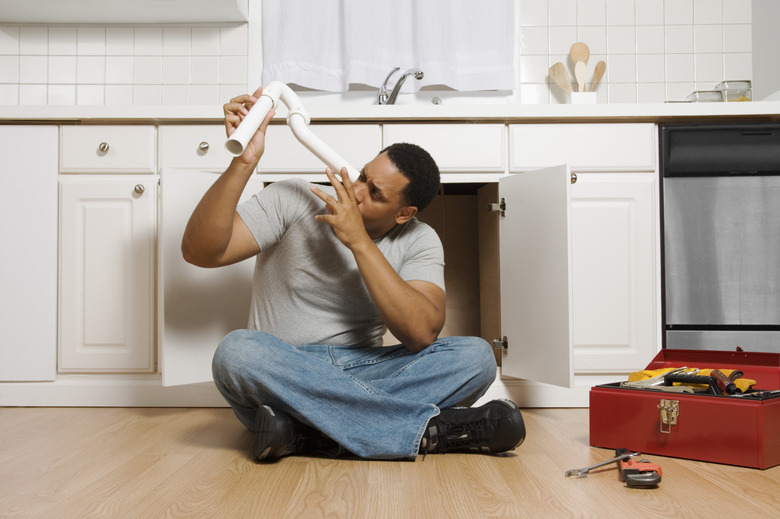How To Remove Solid Salt From A Water Softener
Things Needed
-
Broom handle
-
Bucket
-
Wet/dry vacuum cleaner
-
New salt pellets
Water softeners work by sending water through a tank containing resin that removes the minerals from hard water. The resin tank must then be restored by washing it in a salt brine. For this reason, homeowners must add salt pellets to a water softener, and this salt is submerged in water to form the brine. At times the wet salt can form a bridge of hardened salt over the water level, preventing the water from dissolving enough salt. When this happens, you must manually remove the solid salt bridge to add fresh salt pellets to the water.
Step 1
Check to see if you can see the water in your water softener tank. If you cannot, it may mean you have a solid salt bridge buildup.
Step 2
Turn off the water softener and unplug it from the electrical outlet. It is not necessary to turn off the water going into the softener unit.
Step 3
Tap the salt gently with a broom handle to see if it is hardened. If it is, remove any loose salt pellets from the surface and place them in a bucket.
Step 4
Continue tapping with the broom handle, adding more pressure to break up the salt bridge. Avoid the sides of the water softener tank which can be easily damaged if you tap too hard with the broom handle.
Step 5
Remove the salt chunks as you break up the solid salt bridge and put them in the bucket until the tank is empty. If there is debris in the bottom of the tank, you can vacuum it out with a wet/dry shop vacuum cleaner.
Step 6
Fill the water softener tank with new salt pellets. Do not reuse the old salt. Do not add too many salt pellets; the salt pellet level should be under the highest water level reached inside the water softener tank. Now you are ready to plug the water softener back in and turn it back on.
Tip
Check for a solid salt bridge first before calling a service technician if your water softener is not working properly.
Warning
Going without a water softener can shorten the life of household appliances and fixtures such as tea kettles, water faucets, dishwashers and washing machines.
